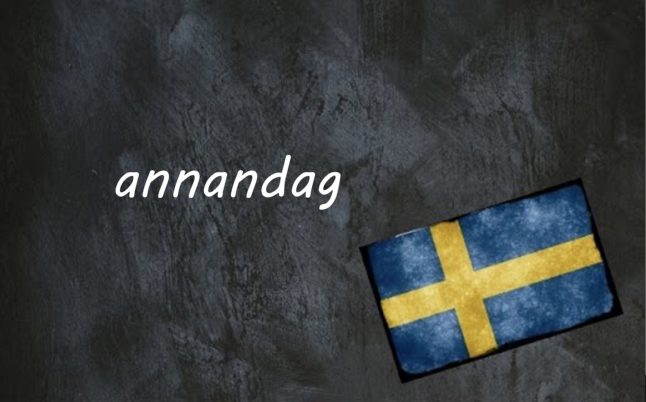A durkslag is a colander, which is sometimes also known as a kitchen sieve, though the kitchen sieve is made like a mesh.
Even though this is a common word and an object you find in most Swedish kitchens, not many Swedes will be able to explain where the word comes from or why it is called what it is. Here is yet another opportunity for you to shine with in front of your friends through displaying your expert knowledge of Swedish.
A slag can be any number of things in Swedish. Slag can mean a ‘hard hit often from clenched hand’, ‘a stroke of hand in the air’, ‘a setback or blow’, ‘a battle’, ‘a clock strike’, ‘to be fit’, ‘a brief moment’, ‘a stroke’ as in ‘having a stroke’, ‘the folded up part of clothing item’, ‘a species or variety of animal or plant’.
So which of these is being used in the word durkslag?
The answer is quite logical, you shake or hit a colander on something to make sure as much water as possible leaves your pasta. So it is either ‘a hard hit’ or ‘a stroke in the air’ which is really the same meaning of the word.
But what about durk? Durk has two meanings in Swedish, both ones that do not seem to fit at all – it either means ‘the floor of a ship’ or ‘a storage room on a naval ship’. Here the Swedish Academy comes to our aid. It gives us a German origin for the word, ‘attested since 1613; from Low German durchschlag with the same meaning, from durch meaning ‘through’’. So the word in German also means to punch a whole through something.
The word then comes from either the act done with it of ‘hitting to get water through the holes’, or more likely from ‘punching holes through’, which is precisely what has been done to create most colanders – that is if they aren’t kitchen sieves, which would be a sil or kökssil in Swedish.
Be sure not to miss the opportunity to dazzle your Swedish friends with this newfound expert level knowledge whenever you engage in small talk next, quite obviously by first putting them on the spot by asking them if they know what the durk- in durkslag is. I bet you they have no idea.
Example sentences:
Pelle, vet du var durkslaget ligger?
Pelle, do you know where the colander is?
Lotta, vet du vad durk-, som i durkslag, betyder?
Lotta, do you know what durk-, as in durkslag, means?
Villa, Volvo, Vovve: The Local’s Word Guide to Swedish Life, written by The Local’s journalists, is now available to order. Head to lysforlag.com/vvv to read more about it. It is also possible to buy your copy from Amazon US, Amazon UK, Bokus or Adlibris.



 Please whitelist us to continue reading.
Please whitelist us to continue reading.
Member comments